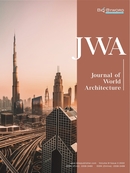A Review on the Post-Earthquake Emergency Conservation Project of Fulong Taoist Temple
Abstract
The 2008 Wenchuan earthquake in Sichuan Province caused significant damage to Dujiangyan irrigation system, which is one of the world’s cultural heritages. After the earthquake, the Chinese government launched the post-earthquake emergency conservation project for cultural heritages. The Fulong Taoist Temple in Dujiangyan was the first to adopt the conservation project. The earthquake-damaged Fulong Taoist Temple was restored in just 18 months. This article reviews the entire emergency conservation project of Fulong Taoist Temple in Dujiangyan after the earthquake, discusses the restoration principles and technical methods used in this project, and uses the comments of the Asia-Pacific Heritage Protection Award to expound the historical significance of this protection project.
References
ICOMOS, 2011, The Athens Charter for the Restoration of Historic Monuments – 1931, International Council on Monuments and Sites, November 11, 2011. https://www.icomos.org/en/179-articles-en-francais/ressources/charters-and-standards/167-the-athens-charter-for-the-restoration-of-historic-monuments
ICOMOS, 2011, International Charter for the Conservation and Restoration of Monuments and Sites (The Venice Charter – 1964), International Council on Monuments and Sites, November 11, 2011. https://www.icomos.org/en/179-articles-en-francais/ressources/charters-and-standards/157-the-venice-charter
ICOMOS, 2011, European Charter of the Architectural Heritage – 1975, International Council on Monuments and Sites, November 11, 2011. https://www.icomos.org/en/179-articles-en-francais/ressources/charters-and-standards/170-european-charter-of-the-architectural-heritage
Avrami E, Mason R, de la Torre M, 2000, Values and Heritage Conservation, The J. Paul Getty Trust, Los Angeles.
Feilden BM, 2003, Conservation of Historic Buildings, Architectural Press, Amsterdam & Boston.
Forsyth M, 2007, Understanding Historic Building Conservation, Blackwell Publishing, Oxford, UK & Malden, MA.
Stubbs JH, Makas EG, 2011, Architectural Conservation in Europe and the Americas. John Wiley & Sons, New Jersey.
Insall D, 2008, Living Buildings: Architectural Conservation: Philosophy, Principles and Practice, Images Publishing, Victoria.
Zhu Y, Xu S, 2010, Post-Disaster Reconstruction of Ancient Buildings in Fulongguan, Dujiangyan. Journal of Architecture, 2010(9): 135.
History and Culture Committee of Dujiangyan CPPCC, 1997, Cultural and Historical Materials of Dujiangyan City Volume 14: Monument in World Water Conservancy History Dujiangyan, Cultural, History and Culture Committee of Dujiangyan CPPCC, 217.
Yang X, 2006, World Natural and Cultural Heritage Volume 10, Yanbian University Press, 99.
Sichuan Provincial Department of Water Resources, Sichuan Dujiangyan Administration Bureau, 2004, Dujiangyan Water Conservancy Dictionary 1st Edition, Science Press, 419.
Wang Z, 2005, Research on the Buildings of Erwang Temple, Chongqing University.
Wang A, 2006, The Pioneer of Taoism in Erwang Temple – Wang Laitong. Chinese Taoism, 2006(2): 50-51.
2008, Dujiangyan Cultural Relics, Cultural Relics Office of Sichuan Provincial Department of Culture, Guanxian Chronicle Compilation Committee, and Guanxian Cultural Relics Preservation Office.
Zhang X, 2009, Research on Architectural Decoration of Erwang Temple in Dujiangyan, Peking University.

